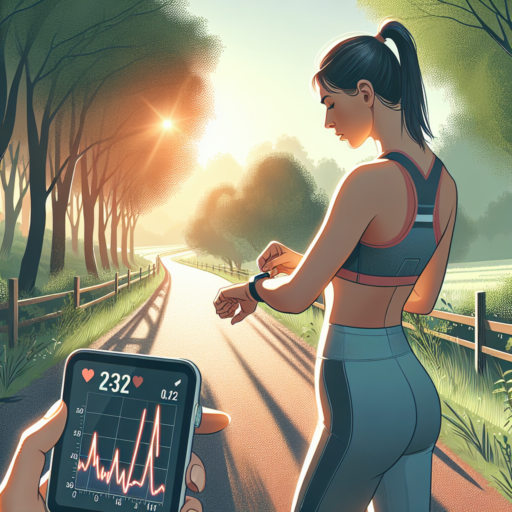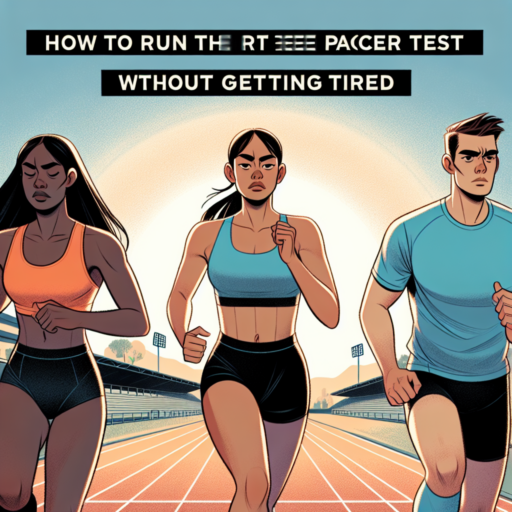Why is my heart rate so high while running?
Understanding why your heart rate spikes during a running session can be crucial not only for optimizing your performance but also for ensuring your overall health and safety. A heightened heart rate while running might seem alarming; however, it’s a widespread phenomenon with several underlying reasons worth exploring.
Possible Causes and Explanations
Exercise Intensity: The most direct explanation for an elevated heart rate during running is the intensity of the exercise. As you push your body to run faster or tackle more challenging terrains, your heart works harder to pump oxygen-rich blood to your muscles, consequently raising your heart rate.
Dehydration and Overexertion: Dehydration can significantly affect your heart rate, causing it to increase as your body attempts to maintain an optimal temperature and nutrient delivery system. Similarly, overexertion without adequate rest periods can lead to a continuous high heart rate as your body struggles to meet the heightened demand for oxygen.
Monitoring and Management Tips
Keeping an eye on your heart rate while running, using a reliable fitness tracker, can help you identify and adjust your running pace to maintain it within a safe range. It’s essential to listen to your body and recognize the signs of excessive strain, adjusting your workout intensity accordingly to prevent potential health risks.
Is 170 bpm bad when exercising?
When discussing the question of whether a heart rate of 170 beats per minute (bpm) is bad during exercise, it’s essential to consider several factors including the individual’s age, fitness level, and the type of physical activity being performed. A heart rate of 170 bpm can be perfectly normal and even desirable for some individuals during certain types of exercise, yet it may be considered too high for others.
Understanding Maximum Heart Rate
The concept of maximum heart rate plays a pivotal role in determining if 170 bpm is too high during exercise. Generally, a person’s maximum heart rate can be estimated by subtracting their age from 220. For example, a 20-year-old’s estimated maximum heart rate would be around 200 bpm, making 170 bpm a reasonable target during high-intensity workouts.
High-Intensity Workouts and 170 bpm
During high-intensity interval training (HIIT) or sprinting, reaching a heart rate of 170 bpm could signify that you’re hitting an ideal intensity level for cardiovascular improvement. Such exercises are designed to push your heart rate up to improve fitness and endurance, thereby making a higher bpm not just normal, but expected.
However, for individuals who are new to exercise, have pre-existing health conditions, or are of an older age, it’s crucial to approach a heart rate of 170 bpm with caution. Engaging in physical activity that causes the heart rate to spike to these levels without proper conditioning can increase the risk of health complications.
In sum, determining whether 170 bpm is «bad» during exercise depends heavily on personal health background and the nature of the workout. It’s advisable to consult with a healthcare provider or a fitness professional to tailor workout and heart rate goals that are safe and effective for your specific health profile and fitness ambitions.
Is a 190 heart rate bad while running?
Understanding your heart rate during exercise, especially while running, is crucial to optimizing performance and ensuring safety. When asking if a 190 heart rate is bad while running, it’s important to consider various factors including age, fitness level, and individual health conditions. Generally, heart rates are gauped against the maximum heart rate, which is roughly calculated by subtracting your age from 220. For instance, a 30-year-old would have an estimated maximum heart rate of 190 beats per minute (bpm).
Running at a heart rate of 190 bpm could be considered high for most individuals, yet for some, particularly young adults or well-trained athletes, it might be an achievable peak heart rate during intense sessions. It’s essential to differentiate between temporary peaks and sustained rates. A momentary peak in heart rate during vigorous activity might not be alarming, but maintaining such a high rate for extended periods warrants caution and potentially medical advice.
Moreover, how you feel at this heart rate plays a significant role. Symptoms such as dizziness, chest pain, or shortness of breath at this heart rate level demand immediate attention. It highlights the importance of listening to your body and recognizing signs that may indicate overexertion. For persons with cardiovascular conditions or those not accustomed to high-intensity workouts, a heart rate nearing 190 bpm could indicate pushing beyond healthy limits.
No se han encontrado productos.
What is a good heart rate for a runner?
Understanding the optimal heart rate for a runner is critical for maximizing performance and ensuring safety. Generally, a good heart rate depends on several factors including age, fitness level, and running goals. However, most runners aim for a heart rate within their target heart rate zone during exercise.
To calculate your specific target heart rate zone, you can use the formula: 220 minus your age. This will give you your maximum heart rate (MHR). For endurance training, running at 70-80% of your MHR is often recommended. This means if you’re 30 years old, your maximum heart rate is about 190 beats per minute (bpm), and your target zone would be between 133-152 bpm.
It’s also important for runners to consider their resting heart rate and how it changes with training. A lower resting heart rate can indicate a higher level of cardiovascular fitness. Elite athletes, for example, often have a resting heart rate well below 60 bpm. Monitoring these changes can provide insights into your fitness journey and help adjust your training intensity.



